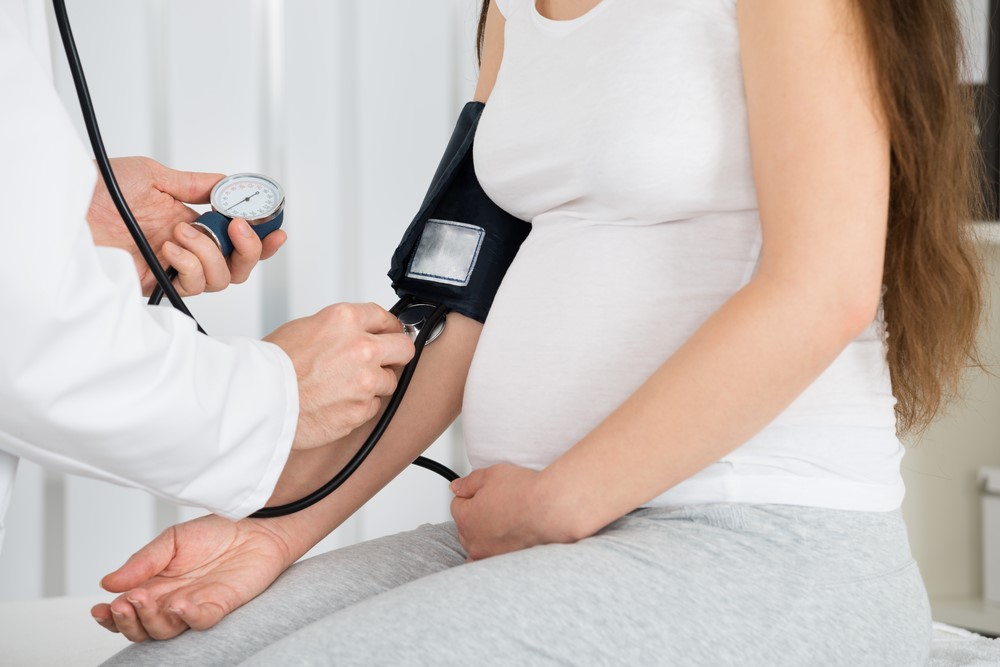
Preeclampsia and eclampsia in pregnancy: what are they?
It affects around 3-5% of pregnant women and is one of the most serious complications of pregnancy: preeclampsia, formerly known as gestosis, is a condition that should not be underestimated
In order to avoid worrying consequences for mother and baby, it is essential to diagnose it in time: for this reason, blood pressure must always be monitored.
High blood pressure in pregnancy and protein in the urine
It appears, usually suddenly, in the second part of pregnancy, after 20 weeks.
To avoid damage, even serious damage, it is essential to diagnose it early, especially by keeping blood pressure under control and with regular urine tests.
Preeclampsia is quite subtle, often the affected woman has no specific signs.
The main symptoms that should make her suspicious are two: high blood pressure in pregnancy above 140 maximum and 90 minimum, and the presence of protein in the urine with levels above 290 mg/l.
The causes of preeclampsia
There is general damage to the walls of the maternal blood vessels and the placenta, the organ that carries oxygen and nutrients to the baby, but we still do not know exactly what triggers this condition once known as gestosis in pregnancy or gestosis gravidarum.
Damage to the walls of the maternal vascular system leads to two main consequences: on the one hand, harmful substances are produced that damage the mother’s circulation.
On the other, the transfer of oxygen and nutrients to the baby is blocked and the baby suffers.
Preeclampsia or eclampsia: what are the risks?
The symptoms range from coagulation disorders and generalised organ damage to the development into eclampsia, a condition that manifests itself in convulsions, loss of consciousness and in some cases brain haemorrhages.
Unfortunately, precisely because of these consequences, pre-eclampsia is one of the main causes of maternal mortality during pregnancy and childbirth, both in developing countries and in more advanced ones such as Italy.
The risks for the baby?
The main risks are those of growth retardation or stunting, in addition to the risks of a premature birth: when pre-eclampsia occurs, in fact, the only possible solution is to give birth.
The biggest problem is if it occurs at a very early gestational age, when the foetus – and in particular its respiratory system – is still immature and the risk of perinatal mortality is higher.
Read Also
Emergency Live Even More…Live: Download The New Free App Of Your Newspaper For IOS And Android
Cardiotocography (CTG): Monitoring In Pregnancy
Congenital Heart Disease And Safe Pregnancy: The Importance Of Being Followed From Before Conception
Pathologies In Pregnancy: An Overview
Integrated Pregnancy Test: What Is It For, When Is It Done, Who Is It Recommended For?
Trauma and Considerations Unique to Pregnancy
Guidelines for the Management of a Pregnant Trauma Patient
How To Provide Correct Emergency Medical Care To A Pregnant Woman With Trauma?
Pregnancy: A Blood Test Could Predict Early Preeclampsia Warning Signs, Study Says
Trauma During Pregnancy: How To Rescue A Pregnant Woman
Travelling During Pregnancy: Tips And Warnings For A Safe Holiday
Diabetes And Pregnancy: What You Need To Know
Emergency-Urgency Interventions: Management Of Labor Complications
Seizures In The Neonate: An Emergency That Needs To Be Addressed
Postpartum Depression: How To Recognise The First Symptoms And Overcome It
Postpartum Psychosis: Knowing It To Know How To Deal With It
Childbirth And Emergency: Postpartum Complications
Childhood Epilepsy: How To Deal With Your Child?
Thyroid And Pregnancy: An Overview
Folic Acid: What Is Folin Used For?
What Is Folic Acid And Why Is It So Important In Pregnancy?


